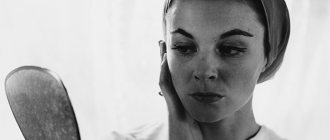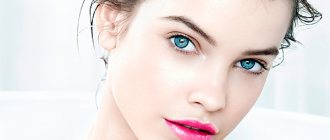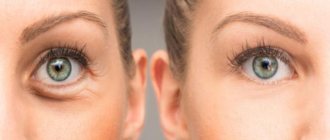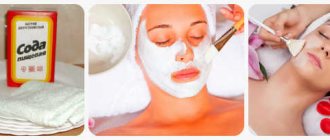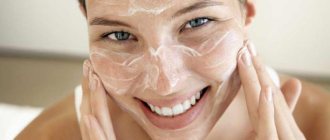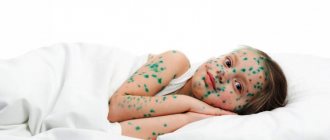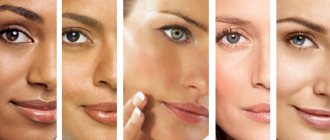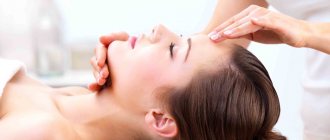Acne (acne) is a chronic inflammatory disease of the sebaceous glands, resulting from their blockage and increased production of sebum.
Sebaceous glands are found only in the skin of mammals, which includes you and me. These glands produce a special secretion (sebum) - a mixture of fats that prevent the skin from drying out, make it elastic, protect the body from various bacteria and infections, and also participate in the complex system of thermoregulation of the skin.
The secretion of sebaceous secretions can increase with an increase in the level of male sex hormones (androgens) and decrease under the influence of female sex hormones (estrogens).
In one form or another, acne occurs in 60-80% of young people aged 12 to 24 years. However, acne can appear after 25 years, usually due to metabolic disorders.
Wash your face regularly (and thoroughly)
It's no surprise that minimizing pores starts with good skin care, and one of the easiest ways to minimize pores is to always cleanse them thoroughly. However, according to a GH study, 12% of women do not use facial cleansers regularly. “When dirt clogs pores, they expand and appear larger. So it's important to always cleanse your face with a gentle cleanser, especially before bed, to remove excess dirt and oil, explains Margarita Lolis, MD, a dermatologist in Hackensack, New Jersey.
“To cover all areas of the face, including the hairline and around the nose, where dirt can accumulate and clog pores, apply cleanser from the middle of the face up, then down the hairline and around the perimeter just below the chin,” says senior beauty lab chemist Good Housekeeping Institute Sabine Wiesemann. Using a facial cleansing brush has shown in GH Beauty Lab testing that it can help provide an even deeper clean.
In addition to daily cleansing, always use clean makeup brushes (clean them at least once a week) and never touch your face with your fingers. Your complexion (and your makeup brushes!) will thank you.
Several rules will help improve the condition of the skin in the presence of acne and pimples.
It is strictly forbidden to use scrubs and peels during acute inflammation of the skin, in the presence of pimples and blackheads: inflammation can spread to healthy areas of the epidermis. Initially, it is necessary to eliminate the inflammation itself and the reasons that caused it: poor nutrition, metabolic disorders, hormonal imbalance.
You cannot squeeze out pimples and pustules yourself - microtraumas contribute to the penetration of infection into the inner layers of the dermis. An unsuccessfully squeezed pimple can not only lead to the spread of infection, but also leave a scar or indentation.
In case of increased function of the sebaceous glands and in the presence of large pores, it is recommended to wipe the skin of the face, especially areas where pimples and blackheads accumulate, with a 0.5% solution of hydrochloric acid (sold in a pharmacy). This will help stop the appearance of acne and blackheads - sebaceous plugs.
The same effect is exerted by a 0.5% solution of ammonia and a 2% solution of salicylic alcohol. These solutions have an antimicrobial, degreasing and disinfectant effect.
During an acute inflammatory process, avoid procedures associated with steaming your face: steam baths and saunas. The increased blood flow to the skin caused by these procedures will cause the infection to spread.
In the evening, thoroughly cleanse your face using special products designed for oily and problematic skin. It is preferable to use gel or cream cleansers that form a foamy mass when applied to a damp face. Scrub granules can cause injury in the presence of inflammatory processes.
Gently and thoroughly, with circular movements, for 2-3 minutes, massage your face, especially problem areas. Rinse generously with water and wipe your face with sour tonic.
Moisturizing cream or gel for oily skin types can be applied after a few days, when inflammation disappears and the number of pimples and blackheads decreases.
During the treatment period, in the presence of acne, special protective creams are used. Such products containing zinc oxide are found in every series of modern cosmetics from well-known brands.
Change your lifestyle and diet. Include in your diet foods containing vitamins that regulate skin condition. Find 15 minutes a day for a set of exercises, try to be in the park or outside the city more often, where the air is clean.
Exfoliate your skin twice a week
Unlike cleansing alone, exfoliation helps remove and cleanse dead skin cells that can clog or block pores. "Exfoliation can be achieved in several ways, both physical (such as facial scrubs or a cleansing brush) and chemical (products with gentle acids that promote cell regeneration)," says Joyce Imajierobo-Ip, MD, a Dedham dermatologist. , Massachusetts, and consultant for HydroPeptide.
Look for gentle cleansers that contain low concentrations of salicylic (0.5-1%), lactic or glycolic acid (2.5-5%), which will stimulate cell turnover and keep pores clear.” You can also try using a prescription topical retinoid, which can increase cell turnover, thereby exfoliating pores and making them appear smaller.
Cosmetology procedures
For moderate and severe forms of acne, drug treatment and the use of external medications will be required to relieve the inflammatory process. When the disease passes the acute form, the doctor will prescribe procedures that will help cope with superficial rashes and clear the skin of acne. Despite the wide range of procedures indicated for acne, there are not many that are effective.
An effective way to completely cleanse your face of comedones. It can be mechanical or ultrasonic.
With a well-designed regimen, a course of acid peels can literally transform the skin.
There are different types, used to treat acne and post-acne due to its powerful renewing effect.
Liquid nitrogen perfectly resolves stagnant post-acne spots, dries out pimples and stimulates the regeneration process.
Moisturize your skin twice a day every day
Source here and below: Pexels
You already know what can happen to your skin if you stop moisturizing it (dryness, flaking, irritation). Enlarged pores are another problem. "It's important to use a high-quality, non-comedogenic facial moisturizer twice daily," says Dr. Imajierobo-Ip. Regularity is key in this case, so you should apply the product morning and evening. "If you leave your skin without hydration, it will react by producing excessive oil, which can clog your pores," he says.
What is acne
Acne is an inflammatory disease of the pilosebaceous follicles. When the sebaceous glands increase in size and produce excess sebum, the hair canal becomes blocked. A sebaceous plug is formed - an ideal environment for bacteria to multiply, then the inflammatory process begins. This is how pimples appear on the face (their synonyms are blackheads and acne).
Acne appears due to blockage of the sebaceous glands © iStock
Apply sunscreen every day
Daily use of a broad-spectrum sunscreen with SPF 30 or higher is an essential part of any skin care regimen for healthy skin and anti-aging, including preventing enlarged pores. “Ultraviolet radiation not only causes sun damage like wrinkles and dark spots, but it also breaks down collagen and elastin, causing pores to widen,” says Dr. Solis.
“The best way to prevent enlarged pores is to protect yourself from the sun.” Some sunscreens can make skin look shiny or oily by emphasizing pores, so choose an oil-free or lightweight gel formula with a matte finish.
Types of acne
In the language of dermatologists, acne rashes are divided into two groups:
Open comedones
These are the most common black dots - sebaceous plugs that appear on the surface, which have changed their color as a result of the oxidation of melanin.
An open comedone is a non-inflammatory element; it is easy to get rid of such pimples using home care with the support of salon cleaning.
Closed comedones
They are more dangerous because the sebaceous plug has no way out. They look like white subcutaneous bumps and can become inflamed and turn into pimples. Under no circumstances should you try to squeeze them out yourself.
Papules
Red bumps, they are also pimples, but without pustules. They are often the result of inflammation of a closed comedone.
Pustules
Classic pimples with a purulent head crowning them. It is the pustules that give us the thirst for violence and the desire to squeeze them out. It is known how an inept assault can end:
at best, a stain will remain;
at worst - worsening inflammation plus another new pimple nearby.
Insidious subcutaneous pimples, indicating a deep inflammatory process and a high risk of scarring. The appearance of multiple nodes indicates severe acne. There is no point in thinking about dealing with it on your own. Let's run to the doctor.
Cysts
Acne cysts are painful subcutaneous inflammations that can merge with each other, forming large cavities. They characterize a severe form of acne and require long-term treatment.
Choose a mask that suits your skin type
They're not just a good way to relax, face masks can also tighten your pores over time. “Home treatments such as facials and peels work with consistent long-term use,” says Dr. Imajierobo-Ip. Incorporate once or twice a week into your beauty routine. If you have large pores and oily skin, masks containing ingredients like clay or charcoal will work best for you.
For other skin types, "multitasking" by applying these formulas to the T-zone (forehead, nose and chin), where pores tend to be most visible, is best.
Skin care rules for acne
Wash your face strictly twice a day © iStock
Proper care will help correct the manifestations of acne and prevent its further development.
Main tips: wash your face twice a day using special products designed for problem skin; do not touch your face with your hands during the day and, of course, do not squeeze pimples.
Do not use alcohol-based products or wash your face with soap: disruption of the natural lipid barrier will cause a response in the form of increased sebum secretion. To help you - gels and lotions with acids and anti-inflammatory components.
Avoid greasy creams; they can clog pores and make the rash worse. Look for the inscription “non-comedogenic” on the packaging; choose light gel-like textures.
Consider laser treatment
To permanently reduce the size of your pores, see a dermatologist who can recommend professional laser treatments. “A series of treatments using non-ablative lasers builds collagen, resulting in smoother skin and smaller pores,” explains Dr. Lolis.
Another option is Fraxel laser treatment, which resurfaces the skin and reduces the appearance of enlarged pores, explains Ellie Summers, a medical esthetician at Tribeca MedSpa in New York City. “Fraxel technology uses heat to create controlled microscopic wounds in the skin to stimulate the body to produce new collagen, resulting in a smoother texture and clearer pores.”
Stages of acne development
The severity of the disease depends on the number of inflammatory elements © iStock
As we remember, the process begins:
with increased sebum production by enlarged sebaceous glands;
disruption of the processes of exfoliation of horn cells.
Excess sebum provides food for bacteria living in the hair follicle, and they literally feast on their favorite treat. After a stormy “feast”, a fair amount of free fatty acids remains, provoking the formation of substances that increase the formation of sebum and inflammation.
Increased oil production, clogged pores, bacterial growth and inflammation all lead to acne.
Any comedon (aka acne) is a potential pimple. With a constant influx of sebum, bacteria begin to multiply inside the sebaceous plug, causing an inflammatory reaction in the hair follicle. The main task is to prevent the development of inflammation.
If the pimple has already popped up and a purulent head appears at the top of the red tubercle, this is not as bad as it might seem.
It is much worse if the inflammation fails to break through and continues to rage in the depths of the skin. In this case, we are dealing with deep acne, which may leave scars.
Benefits of diet
When treating acne, the right diet is important © iStock
To understand how to get rid of acne, analyze your diet. Sugar and carbohydrate foods, as well as milk and trans fats, stimulate the sebaceous glands. If you are prone to rashes, the consumption of these products should be kept to a minimum.
Vegetables, nuts, protein and low-carb foods, olive oil, fatty fish - these are the components of an ideal diet that acne will not like very much.
